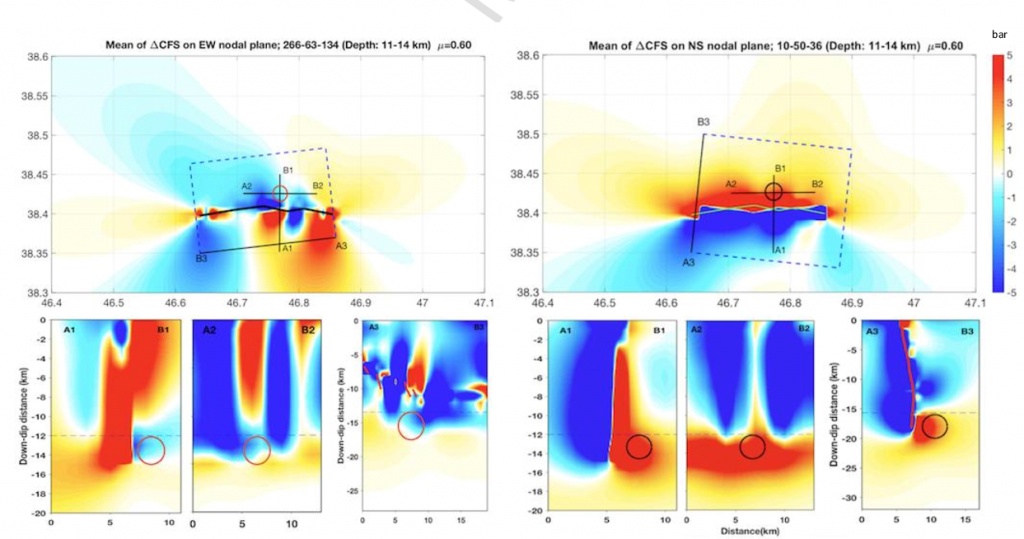Analysis of the 2012 Ahar-Varzeghan (Iran) seismic sequence: Insights from statistical and stress transfer modeling
Rivas-Medina A, Benito B, Gaspar-Escribano JM (2018). Approach for combining fault and area sources in seismic hazard assessment: application in south-eastern Spain, Nat. Hazards Earth Syst. Sci., 18, 2809–2823, DOI: 10.1016/j.gloplacha.2017.12.007
Abstract
The 2012 Ahar-Varzeghan (Northwestern Iran) earthquake doublet and its following seismic sequence are analyzed in this paper. First, it is examined the time-varying statistical characteristics of seismic activity since the occurrence of the doublet (two large events with Mw = 6.4 and 6.2) that initiated the sequence on 11 August 2012. A power law magnitude-frequency distribution (1.9 ≤ M ≤ 6.4) is obtained, with relatively low b-values for the complete series indicating the existence of relatively large magnitudes and high-stress level in the area. The Omori-Utsu model of the aftershock population decay with time shows a moderate decrease in activity rate. An epidemic-type aftershock sequence model that separates background seismicity from triggered aftershocks is then used to describe the temporal evolution of the seismicity during the period following the occurrence of the doublet. Results for the entire series (above cutoff magnitude Mc = 1.9) indicate a relatively low productivity related to the earthquake-earthquake triggering. Indeed, the majority of these events seems to be generated by underlying transient or aseismic processes, which might be added to the tectonic loading stress. The proportion of aftershock events significantly increases when the analysis is limited to larger events (M ≥ 3.0) suggesting that the triggered large aftershocks entail a substantial portion of the energy released. In order to analyze the spatial distribution of the sequence, new source models are proposed for the two main shocks. For the first shock, the coseismic slip distribution is constrained by the available data on surface ruptures. A Coulomb failure stress transfer model produced by the first event along optimally-oriented planes allows identifying the areas with positive stress loads where the rupture of the subsequent aftershocks may have occurred. The positive ∆ CFS areas are compared for two depth intervals: 3–10 km and 15–22 km overlapping over 350 relocated hypocenters, giving arguments supporting the interpretation of ∆ CFS as a main mechanism for aftershock triggering in deeper zones of the upper crust. Read more

